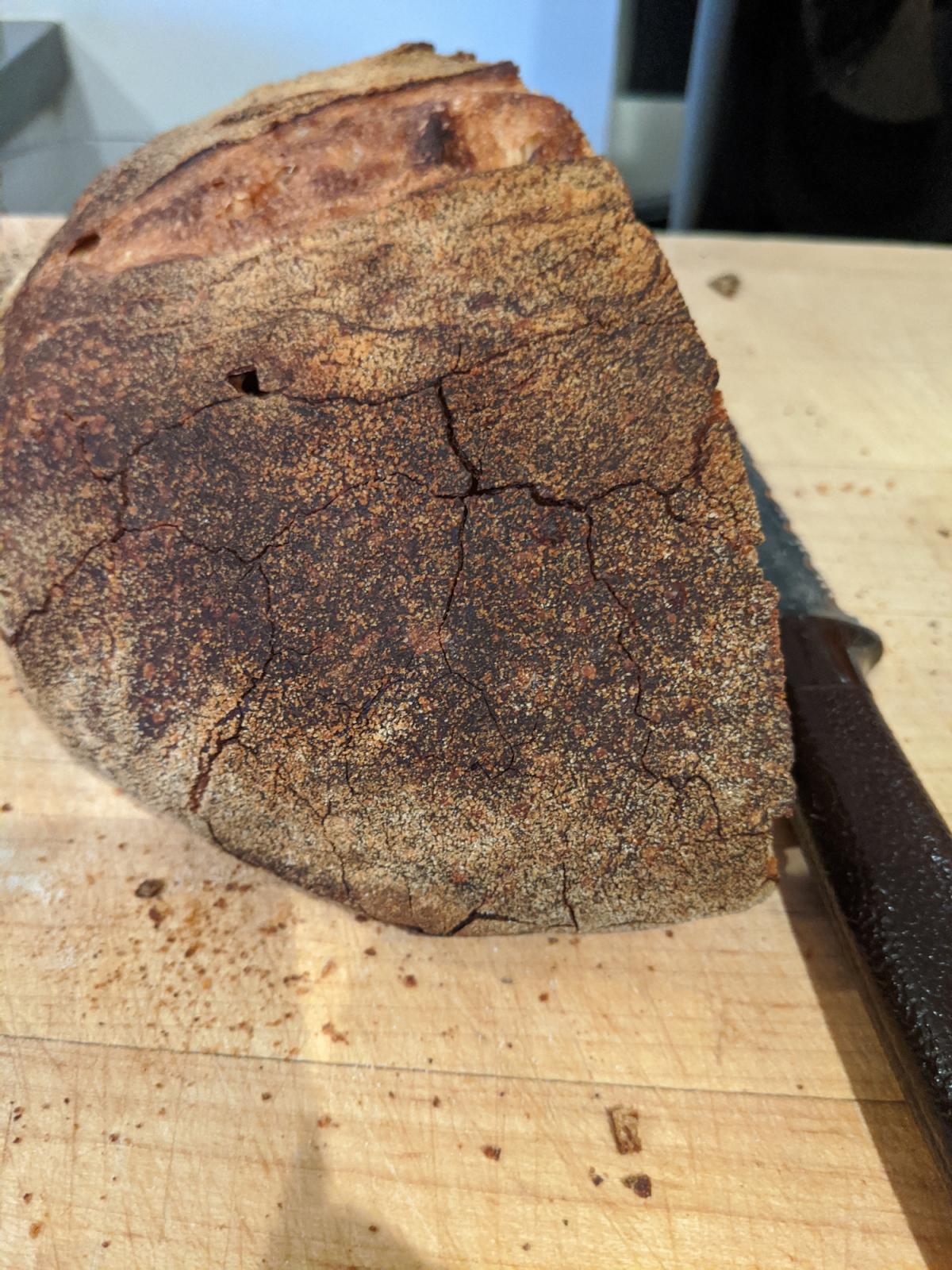
Oven Spring h e l p please
Hello Fresh Loaf Community -
Like a zillion others here I have been bitten by the sourdough bug after years of successful no knead bread baking using commercial yeast.
No matter what I do, with the exception of one bake, my loaves all turn out on the flat side. I am certain that my starter, which I made myself back in March is strong. I keep it in the fridge, and I feed for at least 2 days, 3x a day at around 81deg. It easily expands to peak regularly at 2.5x or sometimes even 3x.
I keep wondering if I am over proofing......but maybe I am under proofing. I do know that even after I stretch and fold, coil fold, etc., the dough frequently has a tough time keeping shape. It starts tight, but then goes slack. I will admit, that I am probably mixing up too many variables each bake in search of an answer by cycling through the recipes below, adjusting hydration to less or more, etc. etc. Hard to be patient.
I have tried these recipes -
No knead - this does not seem to work well with sourdough.
Regular Chef ( a variation on Tartine Country Loaf)
Lake Champlain Sourdough - Trevor Wilson
Full Proof Baking - this is the one the worked one time.....
Any help would be appreciated. Photos below of all the flat loaves. and the one good one.
FAILS







GOOD BAKE, though crumb not large. Good spring.




Your flatter loaves have the look of being slightly over fermented, this results in a lack of oven spring. The over fermented ones show overall good crumb, not the dense gummy crumb you see in under fermented loaves. Then just under the top crust, you will see larger holes and the crust almost disconnected from the crumb beneath. When dough gets over fermented, the proteolytic enzymes start to break down the gluten network weakening it. If the gluten becomes too weak, it can no longer hold the expanding gases in it so as they break multiple smaller bubbles coalesce into larger ones. This is most visible in your fifth and sixth photos.
You’ll want to cut bulk fermentation shorter, or bulk ferment at a lower temperature, use cooler water at mix or use less levain (compensating for the total flour and water difference so the final dough still have the same total flour and water).
A little tool I’ve been using because I recently have been having problems with fermentation is an aliquot jar. Read this post about using an aliquot jar to help determine when to end bulk fermentation. I wish I knew about his tool over a year ago when I first started to bake sourdough.
Your last couple of photos show really nice loaves you’ve baked, you’ll reproduce those again in your next bake I’m sure.
Benny
Thanks, Benny! The aliquot jar tool is kind of brilliant - that's a great link. And, when you think about it, almost too obvious - like watching your starter rise. Thank you!
So you bulk until it hits the 90% mark, correct? If one chooses to final proof at room temp and not in the fridge do you factor that time in when using the aliquot to measure rise?
Best,
David
Glad you think the aliquot jar may be of some help to you David. Most bakers bulk ferment to a 50% rise and then pre-shape and shape. At that point I have always cold retarded my dough in the fridge so the aliquot jar dough is tossed in the garbage. I’m not sure you would continue to use the aliquot jar for a bench proofing or not. You would have to experiment with it and see what degree of rise would be optimal for you.
Benny
Hey, those final boules in the photos look great! I agree with the other comment that it's probably an over fermentation problem so that the dough can no longer hold its shape well. I recently posted two videos about how I have been getting great oven spring and maybe they'll be helpful to you. Basically I find that the following has really worked for me:
- Bulk fermentation for enough time but not over fermented (usually 4-5 hours for me at room temperature)
- Cold retard/proof in the fridge overnight (just seems to help with scoring and oven spring)
- Just stick with stretch and folds usually (no-knead sourdoughs are possible but get a lesser oven spring, and I don't try coil folding that often to know what difference it makes)
I'll link my two videos below. Hope they help!
Bulk fermentation for good oven spring...
Shaping and scoring for oven spring...